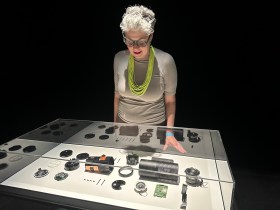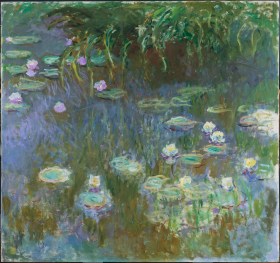I was shooting out the gallery door on a Friday night when I asked a young colleague what his weekend was looking like. After a roll call of lunch, party, football and lunch, he told me he was meeting up on Sunday evening with a family friend and career mentor to discuss his art world professional trajectory. This is a wise move – having others collaborate in or provide guardrails for your advancement is always wise. The lunch, party, football and lunch roster was, however, wisest of all.
Anyhoo it got me thinking. I’ve written on art world career advice before, right down to the granular level: in my world, you don’t meet prospective clients – or your intended professional peer group – in economy class. As Aristotle Onassis once said: “The greatest asset any businessman can have is a suntan… To be happy, make sure you are tanned, live in expensive buildings – even if you have to stay in the cellar. Go out to expensive restaurants, even if you can only afford one drink.” Remember: position yourself physically within the social environment of your clients or peers – and look relaxed. The granular career stuff is important, and it can be great fun to forensically analyse.
But it did get me thinking – particularly in the Australian art world – about what macro-level guardrail advice I would give to anyone starting out in the visual arts. One thought floated to the top – and I haven’t been able to dislodge or greatly disprove it – and that is, you can move within the visual arts industry from the private sector to the public sector, but not the other way around. Changing horses midstream is more often than not a one-way, difficult and forever career shift.
Yes, I’m speaking in generalities. Yes, there are exceptions to every rule, but there is a general rule, and for good reason. The private and public sectors in the arts operate under entirely different cultures and incentives. The private sector is driven by sales, profit and loss, client relationships and market agility. The public sector prioritises policy, inclusivity, process, stability and long-term community impact. The skill sets are not just different; they are often seen as incompatible, especially in hard-nosed hiring decisions. In the day, a subtle yet damning round-up of an interviewee’s potential fit for one of my galleries was simply: “too Australia Council” [now read ‘too Creative Australia’]. Nuff said.
Private sector roles often involve more company and/or personal risk, particularly for smaller galleries and their gallerists, colleagues, artists or independent curators. The public sector, by contrast, offers more job security, but less room for entrepreneurial innovation. In the public sector, risk is broadly diffused by design, with little personal accountability. This differing perception of personal risk shapes and colours both careers and the nature of individual growth
Private sector careers develop financial acumen, commercial negotiation, client service and profit-driven thinking. Public sector careers foster grant writing, stakeholder management and policy interpretation. These skill sets rarely translate neatly between the two.
Read: So you want my arts job: V&A Chief Curator Wedgwood Collection
At the same time, public sector jobs increasingly favour ‘safe’ candidates – those unlikely to ruffle feathers or attract media scrutiny. The near-implosion of Creative Australia during the Khaled Sabsabi Venice Biennale controversy – centred on competing interpretations of artistic freedom, governance and risk – hinged almost entirely on who actually takes responsibility for decisions: the Minister, Chairman, Board, Managing Director, Executive Team?
Who decided what, and how it didn’t stick, was all pretty messy to watch. This culture of institutional risk aversion can make it difficult for commercially-savvy or at other times genuinely visionary thinkers to be hired. It’s a reality worth noting for those who sincerely believe excellence alone guarantees access.
Private sector work in the arts can be fast paced, often dictated by compacted monthly exhibition calendars, market demands and client deadlines. Public institutions, by contrast, tend to operate on multi-year planning cycles tied to government funding and policy review. Someone used to the tempo of one style of work environment will likely feel out of sync in the other.
In the private sector, success is often measured by sales, collector engagement and ultimately profit and loss. In the public sector, KPIs may revolve around grant acquittals, visitor numbers, community access and policy compliance. These are two fundamentally different ideas of ‘impact’ and personal responsibility – and they are rarely transferable when applying for roles across sectors. Over the years, I have seen many migrate from the private sector to the public sector because they were uncomfortable under the spotlight of individual accountability and felt that the blanket of collective responsibility within the public sector was less personally weighty.
There is also an unspoken gatekeeping that happens. If you’ve spent too long in the public sector, private galleries and collectors may view you as out of touch with market realities. Conversely, public institutions may value someone from the private sector for their ‘real-world’ knowledge – but only up to a point.
This private-to-public, but not public-to-private shift plays out across several career scenarios. So, choose your career path in the Australian art world carefully. Or, at the very least, if your interest lies solely in the public sector, know that this may well define your entire trajectory – even if you change your mind later.
Should you wish to predominantly build your career in, say, the art museum world, start with private sector experience early on as a precursor to moving into the public sector. Gain skills and perspectives that are simply unobtainable within public institutions.
Private sector careers often allow for freelance or consultancy transitions later in life. The public sector offers fewer such options unless you’re entering academia or high-level policy. This can affect long-term freedom, especially for those looking to reinvent themselves mid-career.
A move into the public sector from the private side can be the last move you make between these two camps. It is, effectively, a closing of one door to open another. So, by all means, analyse the granular in your career – the ‘what am I doing?’ – but, just as importantly, look holistically to the more important ‘who am I becoming?’ Because knowing what it is that you want to become will greatly help you read the career map, not just where the paths lie, but which ones are one-way. In the art world, the window for bold experimentation is often brief, and hard to reopen.
Read: So you want my arts job: Art Auction Specialist
Oh, and let me leave you with another granular piece of career advice: always be – or at least try to be – polite and diplomatic. But if a situation calls for something more forceful, don’t hold back. Lay waste to whatever stands between you and the outcome you believe is right. Follow the Reid Family Maxim: “Tread softly, with only love in your heart – and carry a handgun.”
Key takeaways
– Do not start in the public sector if you ever want to work in the private sector.
– Start in the private sector if you want to move to the public sector, bringing with you additional skills.
– The private sector develops agility, sales expertise and individual accountability.
– The public sector fosters policy, process and community impact thinking.
– Know where the one-way career doors are before walking through them.






